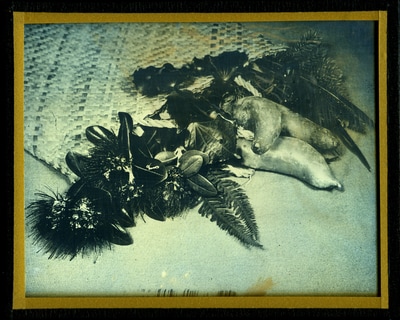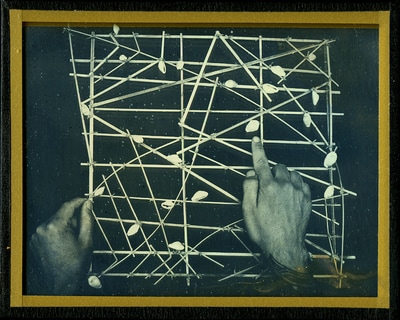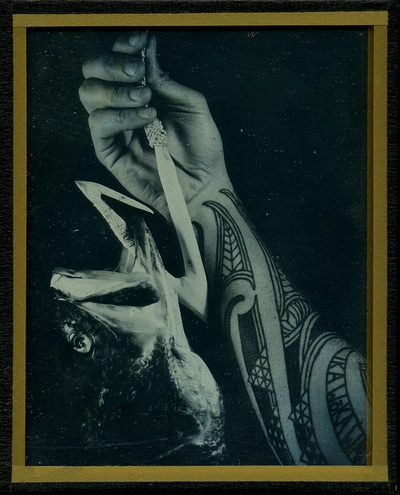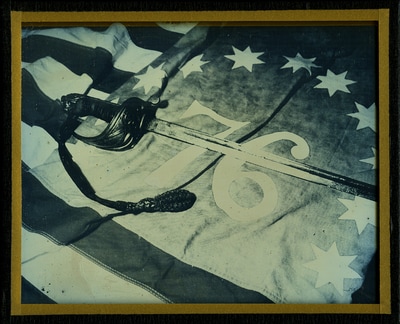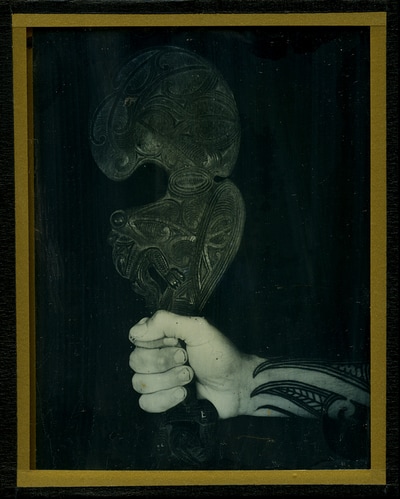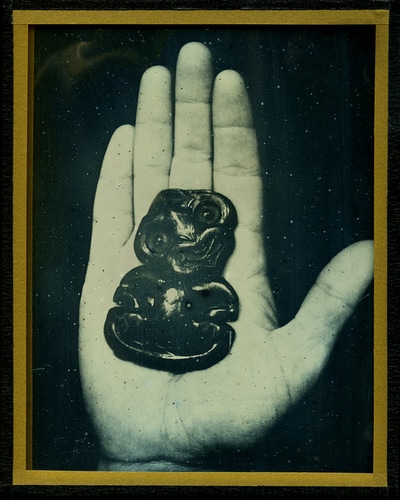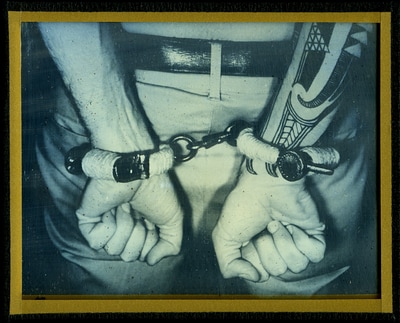Te Moana Nui: Navigating Time & Space
 Te Moana Nui 2017, Daguerreotypes, Paint, Wood, Kūmara and Glass, 100cm x 100cm
Te Moana Nui 2017, Daguerreotypes, Paint, Wood, Kūmara and Glass, 100cm x 100cm
Te Moana Nui is a daguerreotype series that navigates through the cultural history of the Pacific Ocean. Te Moana Nui is the most accepted Polynesian name for the region of Pacific Ocean and in Māori language it is extended slightly to Te Moana Nui a Kiwa. Polynesian people have been exploring, migrating and living throughout the Pacific Ocean for more than 5000 years.
Polynesian people have developed rich and diverse cultural customs from travelling, trading and living in the Pacific. Polynesian migration has stretched from the Philippines in Asia to trading in Chile, South America. They have also settled as far as Aotearoa (New Zealand) in the South, Norfolk Island in the West, Rapa Nui (Easter Island) in the east and Hawai’i in the North of the Pacific Ocean.
The history of different cultural changes that have taken place in the Pacific region has been greatly influenced by migration, war and trade. Polynesian people have not just traded items such as food and cultural material, but also language, beliefs, ideas and customs.
In recent years, Polynesian people and culture have been greatly affected by the colonisation of the Pacific by multiple European empires, including the British, French, Spanish, Portuguese, Germans and Americans. European colonisation has changed many aspects of Polynesian society, such as language, religion, food, migration and trade.
In Te Moana Nui: Navigating time and space, I have drawn on my Māori heritage to focus on the Polynesian cultural history of Aotearoa and how this has been influence by migration, trade and conflict in the Pacific region of Te Moana Nui.
Polynesian people have developed rich and diverse cultural customs from travelling, trading and living in the Pacific. Polynesian migration has stretched from the Philippines in Asia to trading in Chile, South America. They have also settled as far as Aotearoa (New Zealand) in the South, Norfolk Island in the West, Rapa Nui (Easter Island) in the east and Hawai’i in the North of the Pacific Ocean.
The history of different cultural changes that have taken place in the Pacific region has been greatly influenced by migration, war and trade. Polynesian people have not just traded items such as food and cultural material, but also language, beliefs, ideas and customs.
In recent years, Polynesian people and culture have been greatly affected by the colonisation of the Pacific by multiple European empires, including the British, French, Spanish, Portuguese, Germans and Americans. European colonisation has changed many aspects of Polynesian society, such as language, religion, food, migration and trade.
In Te Moana Nui: Navigating time and space, I have drawn on my Māori heritage to focus on the Polynesian cultural history of Aotearoa and how this has been influence by migration, trade and conflict in the Pacific region of Te Moana Nui.
